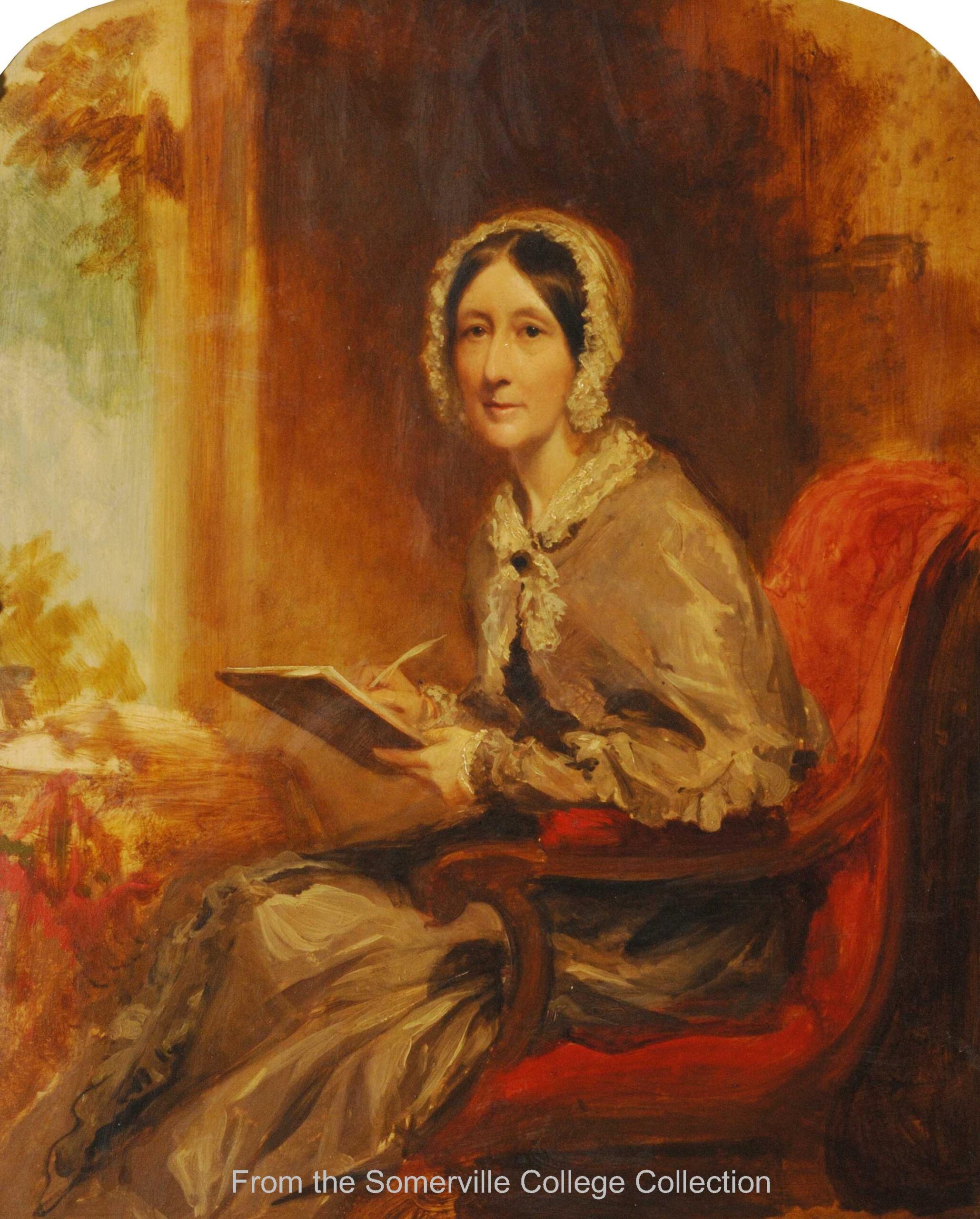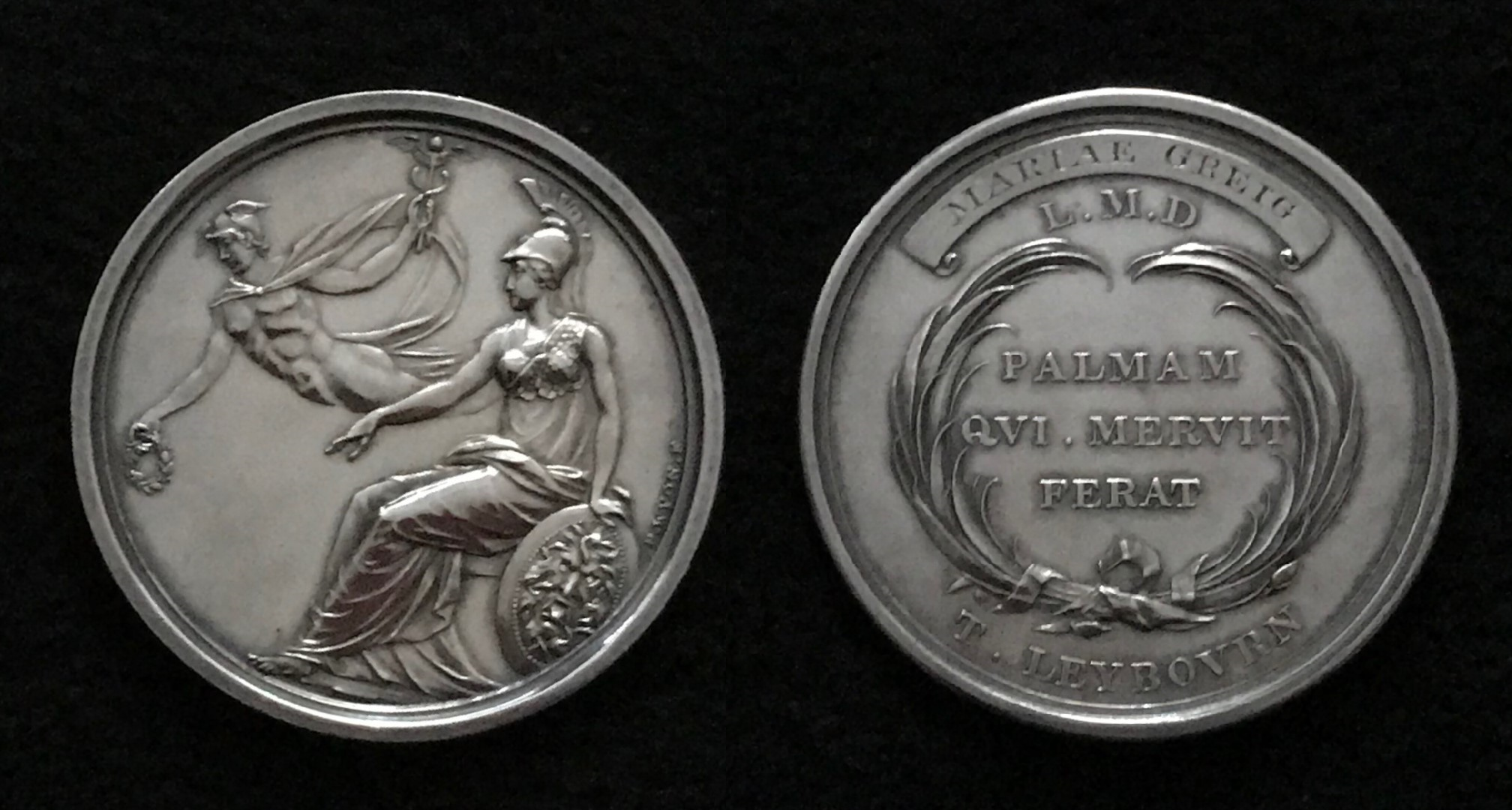I am extremely deaf, and my memory […] is failing, but not for mathematical and scientific subjects. I am still able to read books on the higher algebra for four or five hours in the morning, and even to solve the problems. Sometimes I find them difficult, but my old obstinacy remains, for if I do not succeed to-day, I attack them again on the morrow.
In 1872, 91-year-old mathematician and science writer Mary Somerville noted in her autobiography how some of her faculties had started to diminish in her old age. Her passion for mathematical problems, however, was still as strong as it had been throughout her life.

Born on 26 December 1780 in Burntisland, Fife, Mary Somerville (née Fairfax) was interested in maths from a young age. However, she faced many difficulties in her studies as it was not seen as a suitable pursuit for a girl. Though she did receive some formal education at a girls’ boarding school and her local village school, the majority of Somerville’s scientific education largely came from her own desire to learn.
Often, after she was meant to be asleep, she read books by candlelight, including Euclid’s Elements of Geometry and Bonnycastle’s An Introduction to Algebra. She recalled that her “mother said she would have been contented if I had only learnt to write well and keep accounts, which was all that a woman was expected to know”. Mary Somerville did, however, receive encouragement from her uncle, Thomas Somerville, who picked up on her talent and showed “approval [for her] thirst for knowledge”.
Somerville had a short-lived first marriage to Lieutenant Samuel Greig, her second cousin and a captain in the Russian navy. Writing about this time, she expressed her frustration about the limitations placed on her as a woman who wanted to lead an intellectual life:
From my earliest years my mind revolted against oppression and tyranny, and I resented the injustice of the world in denying all those privileges of education to my sex which were so lavishly bestowed on men.
Despite Greig’s disapproval and disinterest, Somerville persisted in her studies. On Greig’s death in 1807, Somerville and her children returned to her former home in Burntisland with an inheritance that gave her the freedom to pursue her intellectual interests.
She first demonstrated her mathematical ability to a wider public through solutions to mathematical problems set out in the mathematical journal The New Series of the Mathematical Repository, written anonymously under the name ‘a lady’. One of these solutionsearned her a silver medal in 1811, and a year later Somerville was explicitly described as a mathematician by astronomer William Herschel.

Somerville further cultivated her mathematical reputation by entering the scientific circles of Edinburgh, building relationships with some of the leading intellectual, political and scientific thinkers of the period.
Her second marriage, in 1812, to her cousin William Somerville was another entry point into elite company. Together the Somervilles attended lectures at the Royal Institution, visited their scientific friends at home, and built an extensive collection of mineral samples. Unlike her first husband, William actively supported his wife’s work and ambitions. Close friends of the Somervilles included Charles Babbage, whose Difference Engine number 2 is on display in the Science Museum, and Ada Lovelace, who is often called the first computer programmer.
It was not until 1826, however, that her first scientific publication came out – a report on her observations on the magnetising power of sunlight. It was after this that politician Henry Brougham asked her to translate into English Pierre-Simon Laplace’s ground-breaking Mécanique céleste. In this work, Laplace used advanced methods of algebra and calculus to analyse the motions of planets, moons, and comets; these methods were so powerful he could determine the density of the Earth using the motion of the moon. That almost no one in Britain could understand his work was seen by many as signalling the inferiority of British mathematics. Somerville’s translation was published in 1831 as The Mechanism of the Heavens and was deemed a success. It was recommended to high-achieving students at Cambridge and was celebrated as evidence that the decline in British mathematics had come to an end.
Recognition for Somerville was forthcoming after this: the Royal Society, for example, commissioned a bust of her for its Meeting Room. In 1834 the Royal Irish Academy made her an honorary member and a year later the Royal Astronomical Society elected her and astronomer Caroline Herschel its first women honorary members. 1834 was also the year of publication for her book, On the Connexion of the Physical Sciences, which had involved lengthy consultation with Brougham and renowned scientists like Michael Faraday, Charles Lyell, William Whewell, André-Marie Ampère, and Henri Becquerel.
Somerville continued studying mathematics until the end of her life, including work on quaternions, a huge development in algebra which were used by physicists (and later computer programmers) to model the three-dimensional world. All the while, she was collecting a library of mathematical works. This private library was essential to her study of mathematics as she missed out on the direct access to libraries of universities and learned societies which her male colleagues enjoyed. After her death, this library was left to Girton College, Cambridge to facilitate the learning of future women.
One of the most important publications in this later period was her autobiography, edited by her daughter Martha and published posthumously in 1873. Somerville embarked on this project to “show my country women that self education is possible under the most unfavourable and even discouraging circumstances” (noted in an unpublished draft). It is from this autobiography that we know many of the details of Somerville’s life and work.
Somerville died in Naples in 1872 at the age of 91. Her success and long-lasting influence owed a lot to her perseverance. She recognised that study and mastery of mathematics and science was hard work, not merely the application of intelligence. By persisting – and resisting the constraints on her as a woman – Somerville became one of the leading lights in 19th century science and mathematics.
You can find out more about Mary Somerville and other brilliant women mathematicians in our Objects and Stories webpage.